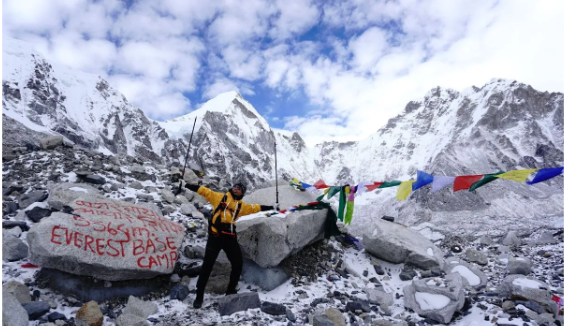The Annapurna Base Camp Trek is one of Nepal’s most iconic and rewarding trekking routes, offering a perfect blend of natural beauty, cultural experience, and high-altitude adventure. Tucked deep in the heart of the Annapurna region, this moderate-level trek leads trekkers into a magnificent amphitheater of soaring peaks, including the mighty Annapurna I (8,091m)—the 10th highest mountain in the world.
With a manageable itinerary, spectacular scenery, and vibrant Gurung and Magar culture, the ABC Trek is ideal for beginners and seasoned trekkers alike. Whether you’re drawn by the panoramic Himalayan views, the chance to explore traditional Nepali villages, or the personal challenge of reaching base camp at 4,130 meters, this journey is guaranteed to leave a lasting impression.
A Journey Through Diverse Landscapes
The Annapurna Base Camp Trek typically takes 7 to 12 days, depending on the chosen route and acclimatization schedule. Most treks begin from Nayapul or Jhinu Danda, which are accessible from the lakeside city of Pokhara. From there, the trail winds through lush subtropical forests, terraced rice fields, rhododendron groves, and into alpine terrain.
As trekkers ascend through charming villages like Ghandruk, Chhomrong, and Bamboo, the landscape changes dramatically. By the time you reach Machapuchare Base Camp (3,700m) and finally Annapurna Base Camp, you’re surrounded by a jaw-dropping circle of snow-capped peaks, including Hiunchuli, Annapurna South, Gangapurna, and the sacred Machapuchare (Fishtail Mountain).
Cultural Immersion in the Heart of Nepal
One of the key highlights of the ABC Trek is the opportunity to engage with local communities. The region is primarily inhabited by the Gurung and Magar people, whose hospitality, traditions, and Buddhist and animist beliefs add depth to the trekking experience.
Trekkers stay in teahouses, family-run lodges that offer not just shelter and meals but also warm interactions and insight into the local way of life. Villages like Ghandruk and Chhomrong feature traditional stone houses, prayer flags, and cultural museums that help you connect more deeply with Nepal’s heritage.
A Moderate Trek With a Big Payoff
The Annapurna Base Camp Trek is often described as moderate in difficulty, making it suitable for hikers with average fitness levels. The trail involves daily ascents and descents, but no technical climbing or extreme altitude. The maximum elevation of 4,130 meters is significant but generally well tolerated with proper pacing and hydration.
An added benefit is the relatively short duration compared to other Himalayan treks. In just over a week, trekkers can experience alpine wilderness, encounter rich cultural traditions, and stand face-to-face with some of the tallest mountains on Earth.
Teahouse Comfort and Nepali Cuisine
Accommodation along the route is in well-established teahouses that provide simple but cozy rooms, often with stunning mountain views. Common meals include dal bhat (lentils and rice), noodles, momos (dumplings), and pancakes. Most teahouses also offer charging points and Wi-Fi (for a fee), although connections can be inconsistent in higher altitudes.
Sharing meals and stories with fellow trekkers around the stove in the dining room is part of the charm of the ABC experience. Despite the altitude, the route is well-supplied and organized, making it one of the most accessible treks in Nepal.
Best Time to Trek
The best seasons for the Annapurna Base Camp Trek are spring (March to May) and autumn (September to November). These months offer clear skies, mild temperatures, and excellent mountain visibility. Spring adds the bonus of blooming rhododendrons, while autumn brings crisp air and the golden hues of post-monsoon landscapes.
Winter trekking is possible but comes with challenges, including cold temperatures and possible snowfall. The summer monsoon (June to August) is less ideal due to rain, leeches, and cloud cover, although the lush greenery is at its peak.
Permits and Practical Information
Trekkers need two main permits:
- Annapurna Conservation Area Permit (ACAP)
- Trekkers’ Information Management System (TIMS) card
These can be obtained in Kathmandu or Pokhara through trekking agencies or the Nepal Tourism Board offices.
Though the ABC Trek can be done independently, hiring a guide or porter enriches the experience, supports the local economy, and provides additional safety.
Why Choose the Annapurna Base Camp Trek?
The ABC Trek stands out as one of Nepal’s most scenic, accessible, and culturally rich adventures. It’s ideal for those who want to witness the majesty of the Himalayas without the extremes of high-altitude mountaineering. With its combination of diverse terrain, welcoming villages, and breathtaking mountain views, this trek offers a rewarding experience that appeals to a wide range of travelers.
For many, reaching Annapurna Base Camp Trek is not just a physical achievement—it’s a spiritual one. Surrounded by towering peaks and Himalayan silence, it’s easy to understand why this place holds a sacred place in the hearts of Nepalis and trekkers alike.
